
Researching and identifying possible improvements to the user experience can have a huge impact on your business. It improves user satisfaction, which can increase retention and limit churn—leading to increased revenue over time.
Some changes can have an immense impact—just look at the $300M button. Of course, not all UX design creates such a big impact, but it’s a great demonstration of the importance of great UX design in your product.
In this article, you’ll learn more about the UX research and design process, as well as how the UX design process will help to improve your final product. If you find that you're missing any of the key skills discussed in the article, be sure to search out UX design courses to improve your skills.
What is the UX design process, and why is it needed?
The UX design process in most UX teams involves researching, understanding, and improving the user experience of your product. It’s a step-by-step, iterative design process that focuses on the user, their problems, and how you can best solve them.
Improving your product’s UX design by creating an intuitive and enjoyable user experience can lead to enhanced customer satisfaction, increased revenue, and a better product overall.
What does the UX design process look like?
There are six major steps of the UX Design Process:
- Define (your final product and goals)
- Research (on real users)
- Analyze (all the information you’ve collected)
- Design (the improved user experience)
- Test (if your design works)
- Iterate (repeat the process)

Looking to grow your product design knowledge? Check out Uxcel’s Product Designer career path course for all the product design skills you need to move into the industry.
6 UI/UX design process steps
Now, let’s take a look at the six steps of the UX design process.
1. Defining and understanding your product
Defining your product and goals is where the UX design process starts. At this stage, your main focus is to define how your final product should work and how it solves your users' problems.
Interviews with key stakeholders are a great way to get your project started. This includes talking with management across departments—from sales, to finance, to marketing, and more. Having these essential conversations helps UX designers identify business goals, and enables them to focus on building UX designs that help hit them.
2. Conducting product and in-depth user research
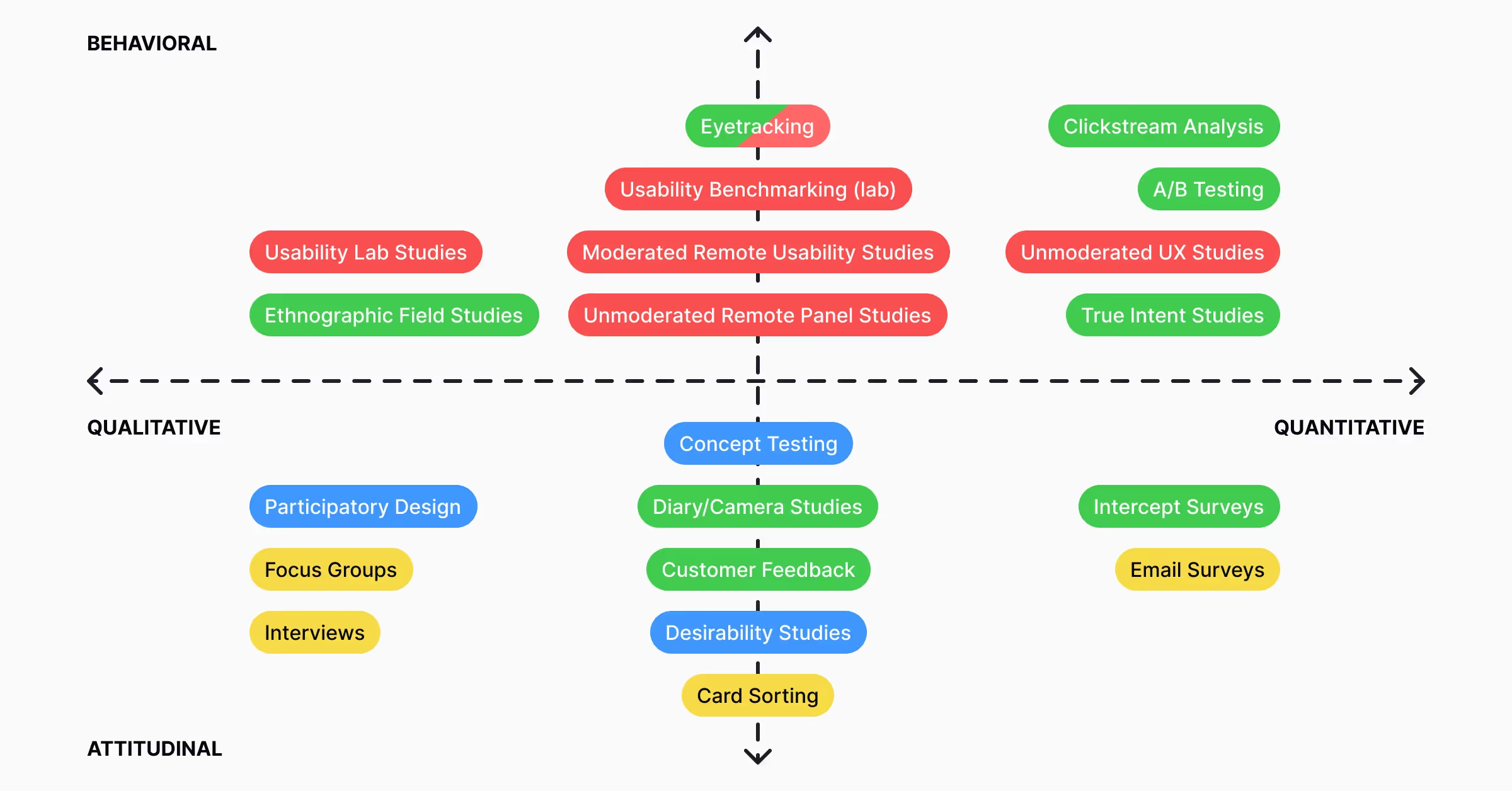
The next step in the UX design process is to identify specific user issues and problem areas. This is what enables you to build a better product.
It’s in this step that you’ll learn about what needs improving, directly from users. You’ve got lots of options when it comes to the type of UX research you’ll conduct:
- Qualitative: this type of UX research returns insights that can be observed but not computed
- Quantitative: this type of UX research returns numerical insights, such as time taken to complete a task
- Moderated: in this type of research the researcher is present
- Unmoderated: in this type of research the researcher is absent
There are a number of different UX research techniques you can use to understand your user’s experience, such as:
- User interviews: this research involves communicating directly with users to hear their thoughts on your product. This helps uncover key insights, and can help with the development of user personas.
- Usability testing: this research method involves testing a design using real users. It typically involves getting users to perform a task, then asking them questions about the experience.
- Heatmaps and click testing: this research method involves analyzing how users interact with your product or website. This gives you insights into where they’re looking on your site, and how you can more easily guide them to performing a desired action.
- Surveys: this research method enables you to gather insights on a wide variety of business-related topics. Surveys give your users the opportunity to share their thoughts in a low-pressure environment.
The best methodology for you depends on what you’re looking to uncover. Is it general feedback you’re after? Do you need insights on how to improve an existing feature? Are you testing a completely new one?
This step is where you gather the insights that will help you build a better product for your users. Next in the UX design process is to analyze your findings.
Want to learn more about UX research? Sign-up to Uxcel and improve your UX research skills today.
3. Analyzing your research results

Following the UX research phase, you’ll have a lot of information to work with.
At this stage of the UX design process, you’ll analyze information to highlight the key takeaways from your research, and how you can use them in the design phase to test your design concepts later on.
It’s during this stage you’ll look to identify pain points. If you’ve conducted qualitative research, this will be verbal dissatisfaction and frustration from users. Think: ‘this is tricky’ or ‘I don’t know how to use this feature’. If you’ve got quantitative data, you’ll be looking for incomplete tasks or time-consuming actions. For example, if users are unable to complete a task during usability testing, there’s an issue with the current design and user interface.
You can also develop user journeys during the research analysis process. User journey maps are a great way to visualize how your user interacts with your product. By doing this, you’ll be able to visualize the user flow and experience and identify friction points to resolve.
4. Designing your ideal product
Now you’ve done the heavy lifting, it’s time for you to action your insights. You’re ready to develop your new-and-improved product, feature, or user flows.
To do this, consider creating wireframes and prototypes—these enable you to test designs before investing too much time and energy into building them.
Let’s take a look at both.
Wireframes
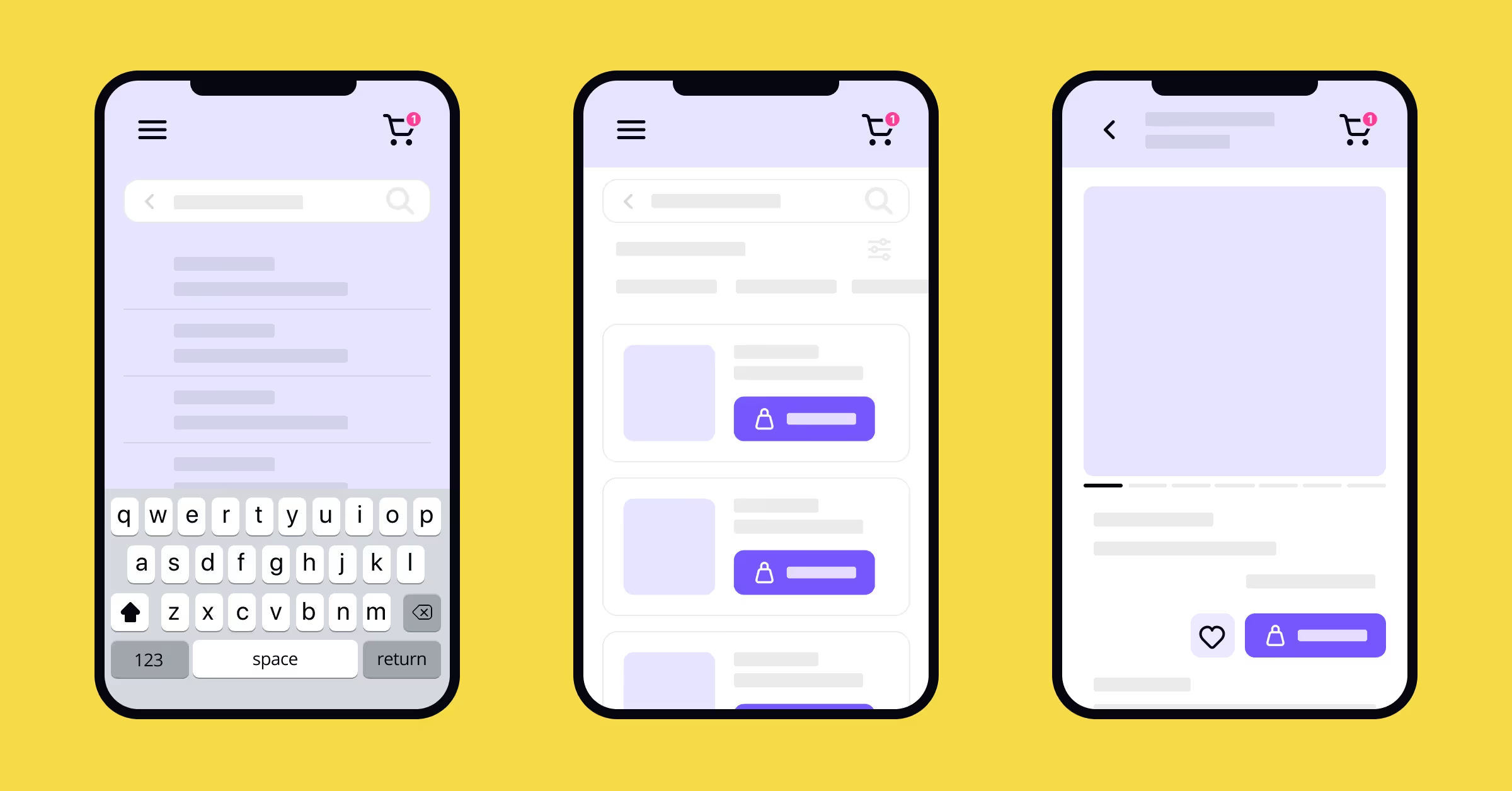
A wireframe is a visual creation designed to represent the skeletal framework of your design. It enables you to give an idea of what you’re building, without having built it. Wireframes can be used to test information architecture, navigation functions, and more.
Wireframes are the first version of the design you’re looking to build, and are very basic representations of the final product.
Want to learn more about wireframes? Take Uxcel’s introduction to wireframing course today.
Prototypes
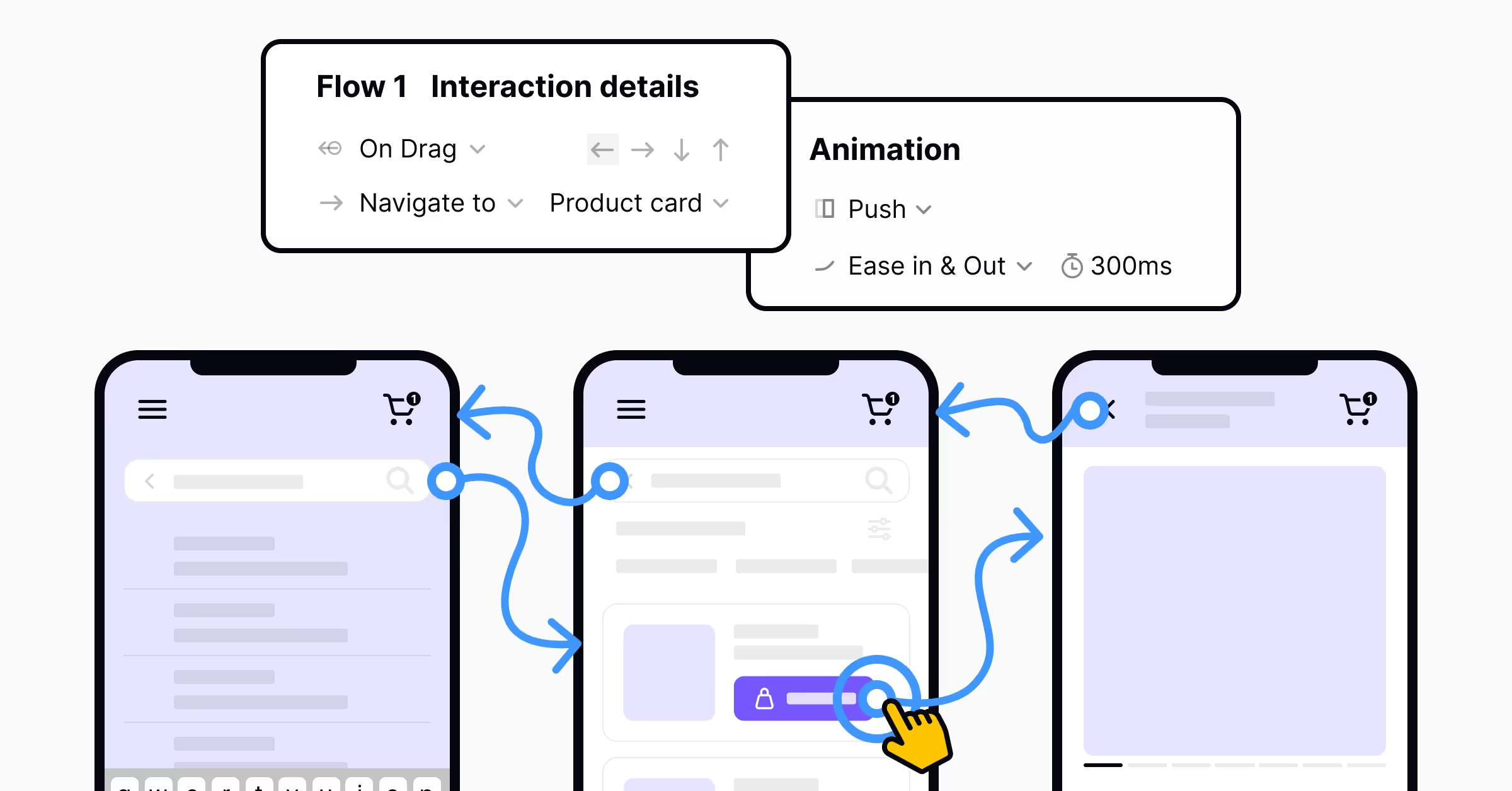
Once you’ve designed and tested your wireframe, you’re ready to create a prototype. Prototypes are closer to the final version of your design, and enable you to test interaction and functionality.
During this design stage, it’s key to keep some key UX design principles in mind. These are UX design best practices that can help ensure you’re building a great product.
Once you’ve created your design, you need to test its effectiveness with users.
5. Testing and noting your findings
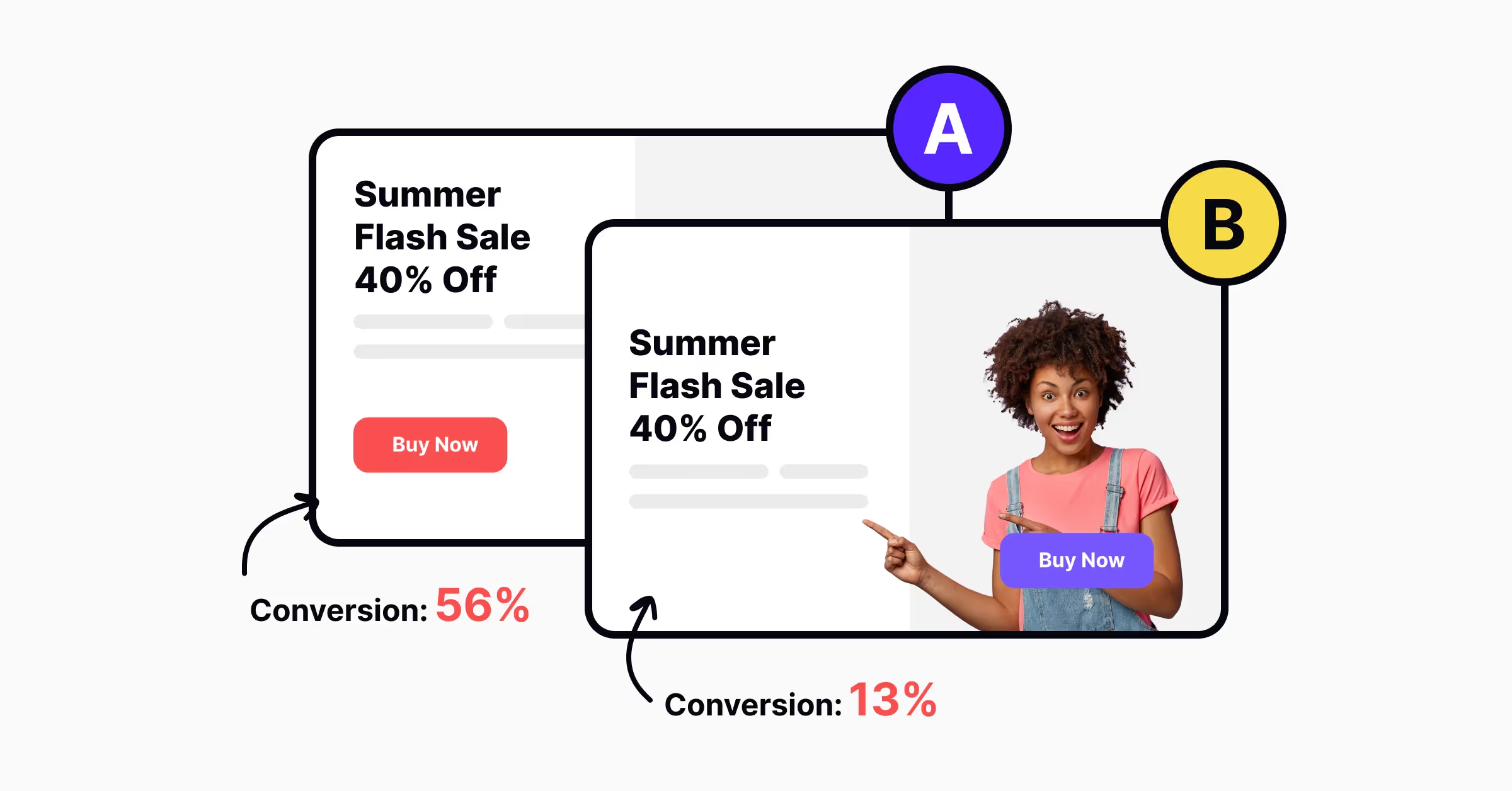
This step is one of the most important stages of the UX design process.
Using different user testing methods will help to validate your design and understand whether your insight-driven developments are actually meeting your user’s needs. There are several ways of testing if your design works as intended—solving the problems it is supposed to solve—and it varies depending on your project needs.
For example, if your UX research has revolved around improving the information architecture of your site, you’ll likely have developed wireframes in the previous step. Here’s where you present wireframes to users and see how easily they can navigate through them.
6. Iterate and continue for relevant processes
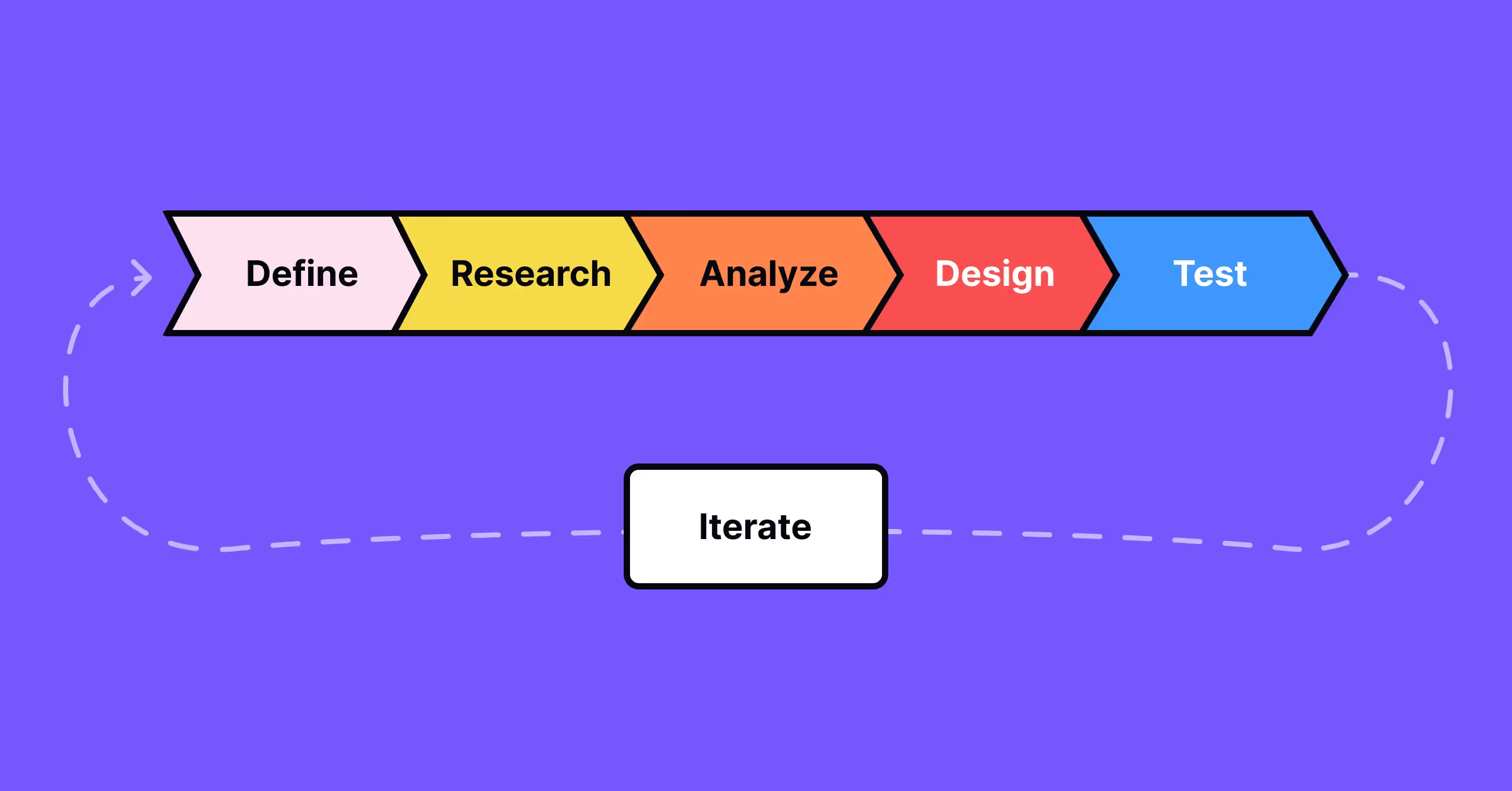
You’re done…for now!
UX research and design is a never-ending cycle of these six steps—there’s always room for improvement. Whether you’re testing the same features or flows or researching for completely new ones, the UX design process is an iterative process.
Your product and users will likely change over time, and as you grow as a business you’ll want to keep offering a high-quality user experience. Every change you make to your product should be made with your users in mind—and that’s done with UX research.
The end result of your design process
Put simply, the end result of your design process is a better product experience for users that’s ready to be implemented by the development team. It should be a frictionless and intuitive experience that meets user want and needs.
If it’s not—you might want to improve your UX skills and head back to step one.
Best practices for a strategic UX design process
Now we’ve looked at the six steps included in the UX design process, let’s consider some best practices to keep in mind when creating UX-informed designs. This will help you ensure your UX research is insightful and able to guide your product development accurately.
Aim to understand your users
If you want to create a good product—one that people will actually like and enjoy—you need to keep the user at the center of your design process. If they don’t enjoy the experience, it’s not good UX design.
Avoid leading questions
When conducting user research, be as neutral as possible. Leading questions will result in biased answers—which skew the results of your research process. If you’re suggesting an answer before the users can think for themselves, you’re not getting honest insights.
Create responsive designs when needed
Creating responsive designs aims to provide a cohesive experience over different platforms. What works on desktop isn’t always what works on mobile—and vice versa. Make sure you build designs that suit both.
Build with accessibility in mind
Building with accessibility in mind is a key UX design principle. It ensures that everyone, irrespective of their disabilities, is able to enjoy good user experiences. Design accessibility should be at the forefront of your design process, not an afterthought.
Keeping these best practices in mind with help ensure your UX process results in a better product that meets your user's needs.
Start creating a solid UX design process with Uxcel
A strong UX design process enables you to build user-centric product experiences. In highly competitive industries, great UX design is how you stand out from the crowd.
Building incredible UX designs take time and effort—as well as a wide array of UX design skills. In such a fast-evolving industry, it’s essential to keep working on your knowledge.
So, why not try Uxcel?
Uxcel’s online courses and lessons are ideal for improving your UX design skills. The platform offers lessons on a wide variety of key UX design topics, from color psychology to gamification.
Take a look at the UX design process courses, and sign up today to get started.




